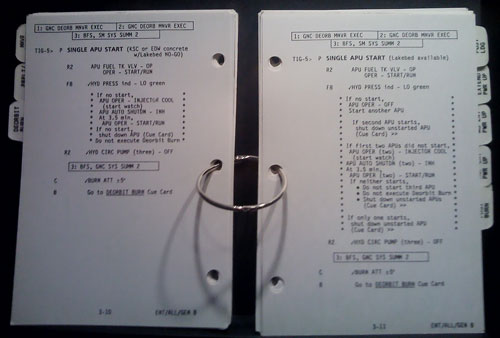Last week I was visiting a NASA exhibition in Madrid. As a usability/UX specialist, I was prepared to see complex interfaces and panels full of buttons; and they were there. But two other things related to UX were called to my attention.
First, prototypes. One of the items at the exhibition was a sequence of prototypes of the lunar module that landed on the moon during the Apollo missions.
Second, checklists. Several old-fashioned paper checklists used during space missions were shown.

I don’t know whether checklists are generally considered as a usability or user-centered design technique; anyway, I think they should. For more considerations about that technique, read the surprising and interesting book The Checklist Manifesto.
So two conclusions came to my mind:
- When we talk about usability methods, it may seem that they are some kind of magic trick or very advanced technique; but most of them are simple and based upon common sense. And they have been performed during many years.
- Since those kind of techniques have been performed during many years, and (most of) the missions were successful… hey, they somehow work!
